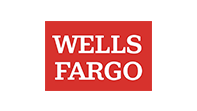Shifting From Financial Education to Financial Capability
Q&A with Darlene Goins, head of Wells Fargo Hands on Banking
Shifting from financial education to financial capability
Wells Fargo’s Hands on Banking® program has a new website, improved features, expanded resources, and a shift in focus from financial education to financial capability. We asked Darlene Goins, head of the program, to explain the reasons behind the changes.
Q: What makes the Hands on Banking financial education program unique?
Goins: Whether a person needs support in making a near-term financial decision, wants to try mobile check deposit for the first time, or is looking for a full financial education curriculum, Hands on Banking is there to provide guidance. The Hands on Banking program supports individuals, teachers, nonprofits, and Wells Fargo team members with online articles, worksheets, videos, and turnkey curriculum-based courses by age and interest.
We want to empower and meet people where they are with content, resources, and tools that support them throughout their personal financial journey. Our vision is to be the relevant and timely resource of choice for educators and individuals. We want to help develop our users’ financial capability so they can successfully navigate life’s financial ups and downs and succeed financially.
Q: Why the shift from financial education to financial capability?
Goins: The Hands on Banking program was designed as a comprehensive financial education program to teach knowledge and skills to youth and adults, primarily through online courses and in-person seminars. Since its launch in 2003, needs have changed, the way people learn has evolved, technology has advanced, and third-party research has uncovered new strategies and approaches in the financial education field.
Developing financial capability is a mindset; it’s taking financial education and using it every day by managing your cash flow, planning for the future, and effectively using financial services. Many people need practice and tools to build confidence to apply that knowledge and those skills to their everyday life decisions and behaviors.
Q: What is the most meaningful change you’re making to the program this year?
Goins: Our new website is the first step in moving toward financial capability.
Here are some highlights of our website enhancements:
- A modern look and feel, with featured content organized by topic and need. This will allow users who are facing a financial crisis or life event to more easily navigate the site for relevant information.
- Polls, interactive worksheets, and quizzes to give users the ability to practice their skills and gain confidence in their knowledge of a topic.
- New banking basics that answer everyday financial questions on topics like online banking, mobile banking, and other banking alternatives.
- A new educator’s page featuring youth curriculum and instructor guides, which are aligned to the Common Core State Standards and English language arts and math standards that many K-12 school districts follow.
Q: Where do you believe the most untapped opportunity lies with this program?
Goins: There is a huge opportunity to expand our reach to increase the financial capability of consumers. According to the National Foundation for Credit Counseling’s 2016 Harris Poll (PDF), 75 percent of U.S. adults say they could still benefit from some professional advice and answers to everyday financial questions.
Nonprofits and social programs often have situations where Hands on Banking can help as they provide services to people in need. For example, with the National Disability Institute, we developed a toolkit to integrate Hands on Banking into American Job Centers.
Also, with 42 states now aligning to the Common Core State Standards and teachers having less time to add standalone course material to their classes, teachers are really looking for digestible lesson plans that are aligned to the Common Core. We can provide those.
Q: What are you striving to attain through the program by 2020?
Goins: One of our company’s corporate social responsibility goals to meet by 2020 is to strengthen the financial capabilities of underbanked customers — those who do not have access or choose not to use mainstream financial services. It starts with developing a best-in-class, multi-channel financial education program that empowers individuals and educators with tailored, relevant, and highly useful content.
To do that, we will continue to expand our adult resources on topics most needed by economically vulnerable segments of our community, including banking basics to support the underbanked and information on ways to avoid scams and other forms of elder abuse for seniors. We’ll also provide essential content for military families and people with disabilities.
We will enhance existing channels, like our Hands on Banking site, with digital and mobile solutions that support continuous learning and engagement — because that’s the way new generations are interacting with banks.
Our team member volunteerism efforts remain a priority as we make new resources available for community outreach. In 2016, our team members delivered free Hands on Banking workshops to 206,300 individuals and families. We will also develop a new K-12 teacher and parent portal and facilitate the integration of Hands on Banking into existing nonprofit and government programs — such as workforce development, state-sponsored scholarships, and housing — to serve more consumers who could benefit from financial capability resources and tools.
Finally, we recognize the importance that Hands on Banking plays in advancing financial education in this country. We recently kicked off a two-year longitudinal research study with the Association for Financial Counseling and Planning Education (AFCPE) on the effectiveness of financial education, counseling, and coaching in different consumer situations. Through thought leadership and our enhancements to the program, we aim to elevate the prominence of Hands on Banking and become a sought-after resource by consumers, educators, and industry stakeholders for their financial capability needs.
I encourage you to read our recent Corporate Social Responsibility report, which discusses our efforts in greater detail.

